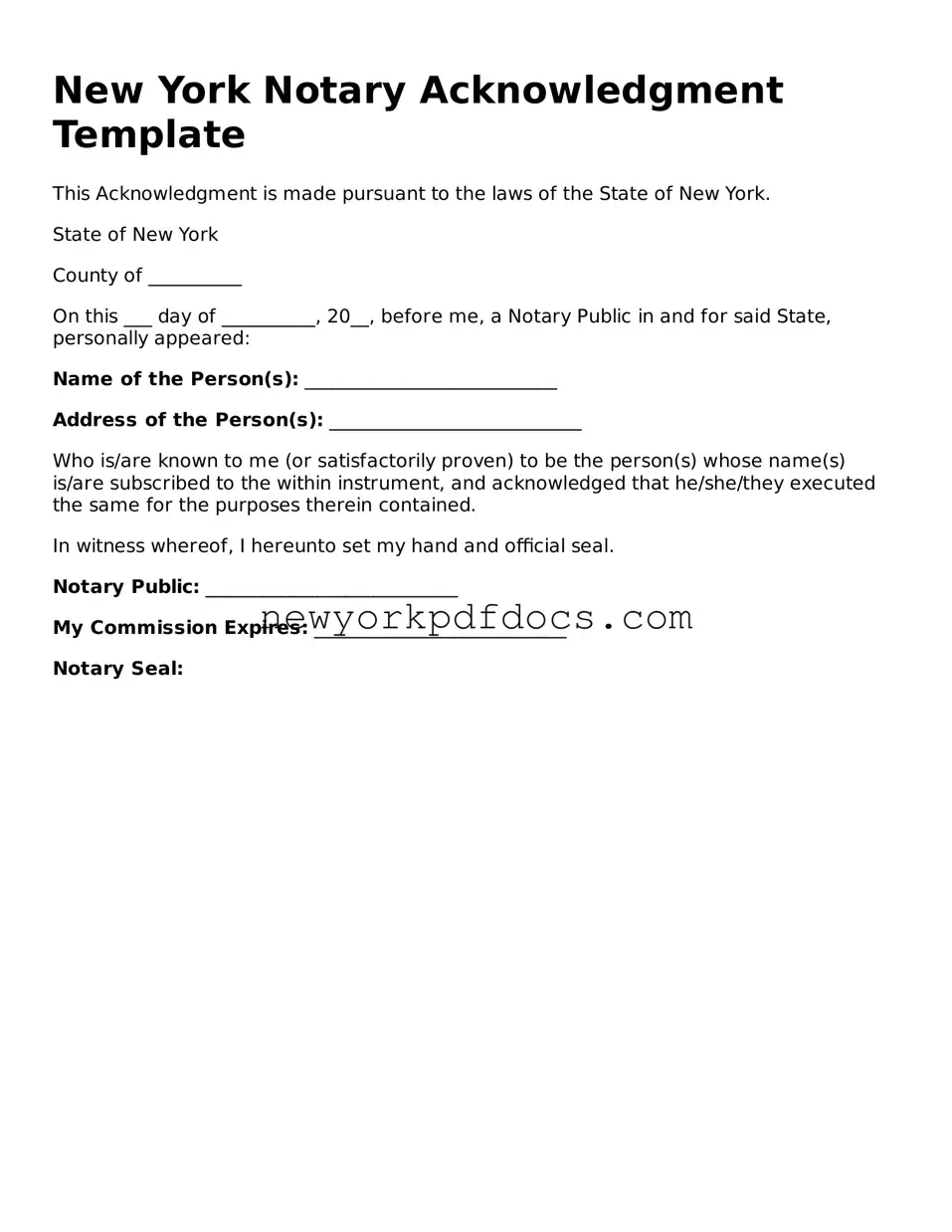Valid Notary Acknowledgement Document for New York
The New York Notary Acknowledgement form serves as a crucial document that verifies the identity of a signer and confirms their willingness to sign a particular document. This form plays an essential role in ensuring that legal documents are executed properly and with the necessary authenticity. Understanding its components and requirements can help individuals navigate the notarization process with ease.
Open My Document Now
